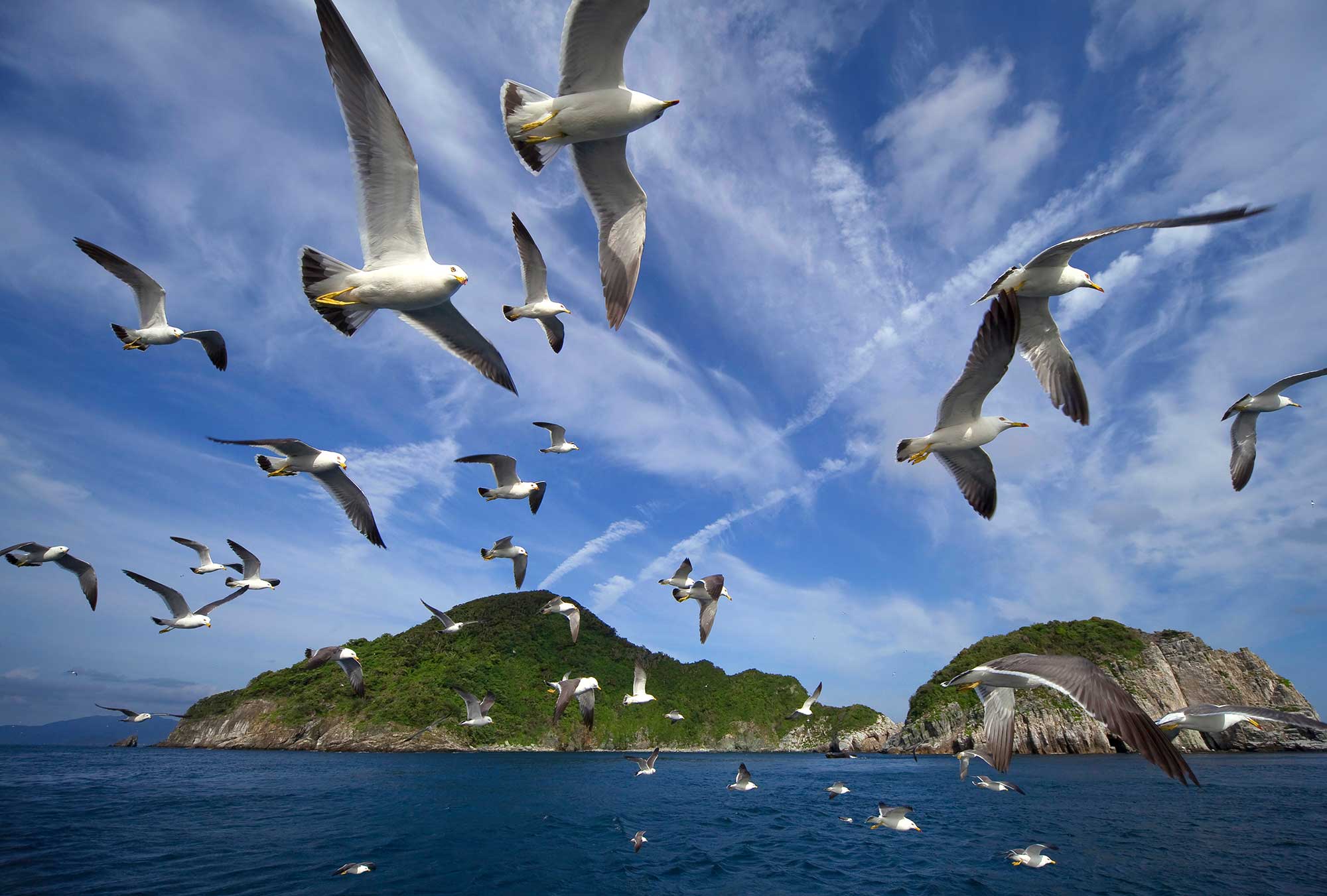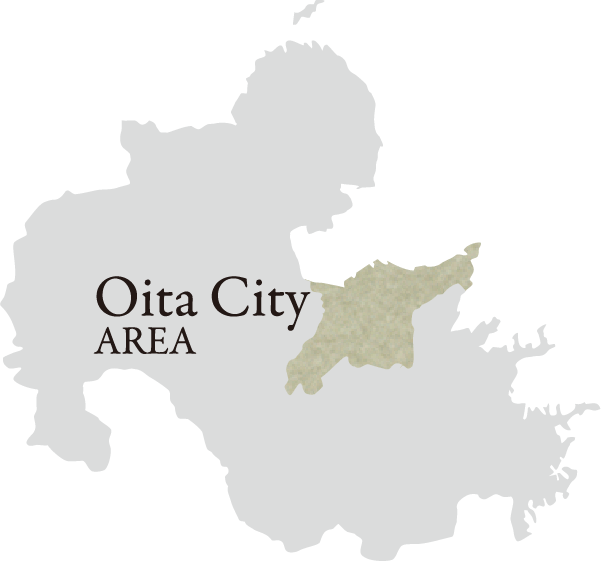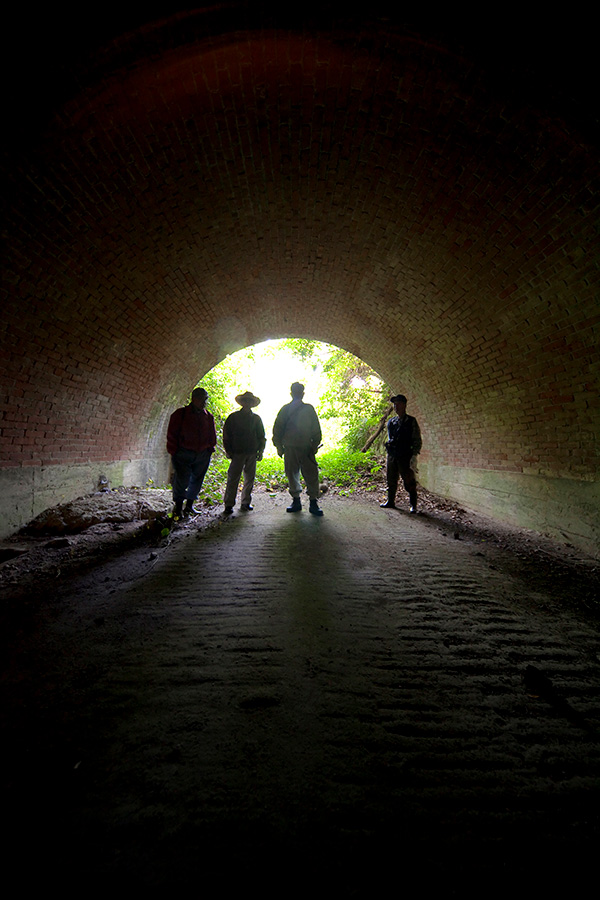

- City of Oita
- Landscape
- Nature
Nature and War Ruins of Takashima Island
Photography/TAKEUCHI Yasunori
Surrounded by Whirling Waves
At the tip of Saganoseki Peninsula, 3.5 kilometers offshore of Sekizaki (also known as Jizouzaki), Takashima Island floats on the whirling waves of Hayasui-no-Seto (Houyo Strait). Located within the Setonaikai National Park, the scenery is one thing, but also the great nature is what you must see on this small island of about 80 hectare. The natural habitat of Birou trees (Livistona chinensis) and nesting sites of black-tailed gulls are the Natural Monuments of Oita Prefecture.
Birou trees are described in literatures such as “Kameyama Zuihitsu” and “Bungo Kokushi” written in the Edo period. Despite its diminishing, here is considered the northern limit of natural habitation. The black current going into the Bungo Channel brought them here.
Black-tailed gulls are a Laridae family bird whose Japanese name “Umineko (Sea Cat)” is derived from its voice resembling a cat’s. They fly over in March to form a colony, lay eggs, raise children, and leave around July to August. From the east end of the island to neighboring Shirataki Island, Funama Island, and Ashikabae are their major habitation spots, whose number is said to be more than 6,000. The rock walls of crystalline schist and rocky beach are covered in white with the birds. This is known as the southern limit of nesting, and they fly around when a sightseeing boat approaches.
The strait between here and Cape Sada in Shikoku connects the Seto Inland Sea and the outer ocean, with both Kanmon and Naruto Straits. As it is called “Hayasui-no-Seto (fast-absorbing),” the current whirls rapidly, being one of the most dangerous zones of the ocean. This raised the people of Amabe, known to operate their ships very well, who created the fishermanship of Bungo.
Shiinetsuhiko, a famous god in the Japanese Legendary narrative of Eastern Expedition of the Emperor Jinmu, Isago and Masgo sisters who were female divers, and the goddess of the Strait, Hayasui Hime, are all enshrined in the former Town of Saganoseki (current City of Oita). And now, they are passed down in the spirits of fishermen who go after Sekiaji and Sekisaba (Horse Mackerel and Chub Mackerel).
The name “Seki” comes from the key point in maritime traffic, which originates from the barriers and gates of the sea routes. They became the front line of modern Japan’s homeland defense. Takashima Island, a long deserted island, was temporarily settled by the samurai who lost their belongings, but they were removed from the island and it was fortified along with the peninsula beginning in 1920. Facilities of the “Houyo Fortress” including gun batteries and ammunition depots are now buried in the ground or in the grass, all over the island.

Ruins of war remain in many places of the island.

